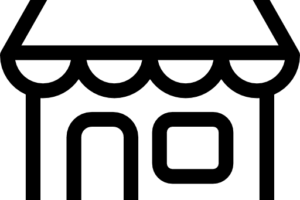Expenses Management System AI Chatbot Using MERN Stack React Web Application
The “Expense Management System” is an innovative MERN Stack web application designed to assist users in efficiently managing their personal finances. This application allows users to meticulously record their expenses, categorize them, and obtain a comprehensive summary of their total spending. Key features include user registration and login, management of expense categories, addition and update of expenses with details such as category, date, and amount, and the ability to delete expenses as needed. Users can also set budget limits for different categories and track their spending against these limits. Additionally, the system provides detailed reports and summaries of expenses over specified date ranges, enabling users to gain valuable insights into their spending habits. With an easy-to-use interface and robust functionality, the Expense Management System empowers users to take control of their financial well-being and make informed budgeting decisions.
In addition to these features, the system integrates an AI-powered chatbot, which leverages OpenAI’s capabilities to assist users in managing their finances more efficiently. The chatbot supports multiple languages and voice input, allowing users to interact with it intuitively and ask questions related to their spending, budgets, and financial goals. Whether seeking advice, or querying expense categories, the AI chatbot provides personalized responses and helps users make informed decisions about their finances, enhancing the overall user experience.Expenses Management System Using MERN Stack Web Application
MERN React JS Software Languages
- Front End : React JS, CSS3, Bootstrap
- Back End : Express JS, Node JS,
- Data Base: Mongo DB
Tools:
- VS Studio
- Mongo DB
Modules List
User
- Register
- Login
- Create Category
- Manage Category
- Add Expenses
- Category, Date, Amount
- View My Expenses
- Set Budget Limit
- My Budget Limit
- Category, Range Amount
- Get My Expenses Summary
- From to To Date wise report
- Use AI Chatbot
- Use Multiple Language
- Ask Question
- Voice input Question
- Get Answers
- My profile
Module Description for Expense Management System
User
Register
- Description: Allows users to create an account by providing details such as name, email, and password. Successful registration enables access to the application features.
Login
- Description: Provides users with secure access to their accounts. Requires valid email and password to authenticate and redirect to the user dashboard.
Use AI Chatbot
- Use AI Chatbot: Access a smart, multilingual chatbot to get instant assistance and financial tips.
- Use Multiple Languages: Communicate with the chatbot in the user’s preferred language.
- Ask Questions: Query the bot about budgeting, category tips, savings, and more.
- Voice Input Questions: Speak queries directly using voice input for added convenience.
- Get Answers: Receive intelligent and context-aware responses from the AI assistant.
Create Category
- Description: Enables users to create custom expense categories (e.g., Food, Transport, Entertainment) to organize their expenses better.
Manage Category
- Description: Allows users to update or delete previously created categories. Helps in maintaining accurate and relevant category lists.
Add Expenses
- Description: Allows users to record expenses under specific categories. Requires input such as the category, date of the expense, and amount spent.
View My Expenses
- Description: Displays a list of all recorded expenses categorized and sorted by date. Helps users track and review their spending habits.
Set Budget Limit
- Description: Enables users to define a budget limit for specific categories within a specified range. Helps in monitoring and managing financial goals.
Get My Expenses Summary
- Description: Generates a summary report of expenses for a selected date range. Provides insights into spending trends and patterns.
My Profile
- Description: Allows users to view and update their profile information, such as name, email, and password, ensuring their account is always up to date.
Existing System
In the current scenario, managing personal and household expenses is often a manual process. Users typically rely on traditional methods such as maintaining physical records in notebooks or using simple spreadsheets to track their expenses. While some users may adopt personal finance software or mobile applications, these solutions often come with limitations and are not tailored to individual needs. Users manually input their expenses, categorize them, and attempt to analyze their spending patterns without much automated assistance.
# Disadvantages
- Time-Consuming: Manually entering expenses into notebooks or spreadsheets is a tedious and time-consuming task. Users must consistently update their records, which can be inconvenient and prone to delays.
- Human Error: Manual data entry is susceptible to errors. Users may forget to record certain expenses, enter incorrect amounts, or misclassify their spending. These errors can lead to inaccurate financial tracking and analysis.
- Limited Insights: Traditional methods and basic software provide limited analytical insights. Users may struggle to identify spending patterns, trends, and areas where they can save money. Advanced data analysis features are often lacking in these systems.
- No Real-Time Tracking: In manual systems, users do not have the benefit of real-time tracking. They can only review their expenses periodically, which can delay important financial decisions and lead to overspending.
- Difficulty in Budgeting: Setting and maintaining budgets is challenging with traditional methods. Users may find it hard to monitor their spending against their budgets and receive timely alerts when they are nearing or exceeding their limits.
- Lack of Integration: Manual and basic digital systems often lack integration with other financial tools or accounts. Users must manually consolidate data from various sources, such as bank statements, receipts, and invoices, which adds to the workload.
- Security Concerns: Physical records and unencrypted digital files pose security risks. Sensitive financial information can be easily lost, stolen, or accessed by unauthorized individuals.
- Inconvenient Access: Traditional methods require users to access their records from specific locations, such as their home or office, which limits the flexibility of managing expenses on the go.
The existing system of expense management through manual or basic digital methods has significant drawbacks. The need for a more efficient, accurate, and insightful expense management solution is evident, paving the way for a modern, automated system that can address these limitations.
Proposed System
The proposed Expenses Management System is a web application developed using the MERN stack (MongoDB, Express.js, React.js, and Node.js) aimed at helping users efficiently manage their personal finances. The system offers a comprehensive set of features, including secure registration and login, the ability to create and manage expense categories, add and view expenses, set and track budget limits, and generate detailed reports of spending over specific periods. A standout feature is the OpenAI-powered AI Chatbot, which supports multiple languages and allows users to interact through text and voice queries. This intelligent assistant provides instant financial advice, generates reports, and answers user questions, making financial management more accessible and efficient for users worldwide.
Advantages
- User-Friendly Interface: React.js ensures an intuitive and responsive interface, enhancing the user experience.
- OpenAI Chatbot Integration: The OpenAI-powered chatbot offers multiple language support, answering queries and providing personalized financial advice through both text and voice input.
- Multi-Language Support: The chatbot’s multiple language support caters to a global audience, enhancing accessibility.
- Comprehensive Budget Management: Automated alerts and budget tracking help users maintain financial discipline effectively.
- Advanced Reporting and Analytics: The system provides detailed summaries, visualizations, and trends for better insights into spending habits.
- Centralized Platform: Combines expense tracking, budgeting, and reporting into one cohesive system, eliminating the need for multiple tools.
- Accessibility and Scalability: The system is web-based and cross-platform, ensuring users can access it from anywhere with an internet connection.
- Robust Security: Features like secure authentication, encryption, and role-based access control safeguard user data.
- Customizable Categories: Users can create and manage custom expense categories to suit their individual needs.
- Cost-Effective Solution: By leveraging the open-source MERN stack, the system offers a cost-efficient alternative to traditional expense management software.
- Environmentally Friendly: A paperless digital solution that reduces dependency on physical records and promotes eco-friendly practices.
The proposed Expense Management System addresses the limitations of traditional expense tracking methods by offering a modern, automated, and comprehensive solution. By leveraging advanced web technologies, the system enhances efficiency, accuracy, and user experience, making it an invaluable tool for effective personal finance management.
Conclusion
The Expenses Management System using the MERN stack provides a smart and efficient solution for users to manage their financial activities with ease. It includes essential features such as expense tracking, category management, budget limit setting, and expense summary generation. The integration of an OpenAI-powered AI Chatbot with multi-language and voice support enhances user interaction by offering general financial guidance in a conversational and accessible manner. Overall, the system simplifies personal finance management while delivering a seamless and interactive user experience.
Future Enhancements
While the current version of the Expenses Management System provides a solid foundation, there are several opportunities for future enhancements to make it even more powerful and user-friendly:
- Mobile Application Support: Developing a mobile app for both Android and iOS will provide users with the flexibility to manage their finances on-the-go, improving accessibility and convenience.
- Integration with Banking APIs: By integrating with banking APIs, users can automatically import transactions and categorize them without manual input, saving time and improving accuracy.
- Multi-Currency Support: For international users, the system can be enhanced to support multiple currencies, allowing users to manage expenses in different currencies with real-time exchange rates.
- Collaboration Features: Adding features for family or team-based expense tracking would allow multiple users to collaborate on managing shared budgets and expenses, ideal for joint accounts or business teams.
- Tax Calculation Integration: Including a tax calculation module that automatically calculates and tracks applicable taxes for each expense, helping users with financial reporting and planning.
- Cloud Backup and Synchronization: Implementing cloud backup to ensure that users’ data is securely stored and synchronized across multiple devices without the risk of data loss.
- Expense Sharing: A feature to share expenses with others (for example, splitting bills) would be beneficial for group or family-based budgeting, ensuring transparent cost management.










